Feature
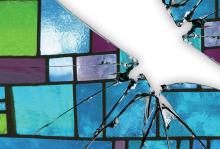
IT BEGAN ON CHRISTMAS EVE, six months after I became the senior pastor at First United Methodist Church. I had been welcomed by most people in my California Central Valley town, even though I was the first woman preacher most of them had ever met.
I entered the sanctuary robed in black, with a colorful stole around my neck (the symbol of the towel Jesus lay over his shoulders when he washed his disciples’ feet). I felt confident, even on a night when many community members would be in church for the first time or had come for their once-a-year worship experience.
I lit a dozen candles on each of two standing candelabras, and red poinsettias glimmered all around me as we sang “Joy to the World.” I preached a sermon from the first chapter in John’s gospel that says light shines in the darkness and darkness has not overcome it. I served communion to parishioners, friends, and slightly eggnog-tipsy extended families. At midnight, we dimmed the lights and sang “Silent Night” by heart, with only the glow of hand-held candles filling the room. I blessed the congregation with raised hands, honored by the privilege in this call to the ministry I embodied, and walked to the entryway to greet everyone.
Most people came by and shook my hand but didn’t linger—they had gifts to open or chores to finish for the next day. At the end of the line came a smiling, grey-haired man who was the lay leader of the church. He was in his 70s, fair-skinned, and nearly six feet tall. He took my hand and kept it beyond my comfort level. Then, as I pulled away, he gripped tighter, cupped his other hand on the top of mine, leaned closer to me, and whispered, “You look beautiful in candlelight.”

It’s always tempting to read without context, or to quickly presume our own. In which case this might yield a bumper sticker for urban ministry: Seek the Welfare of the City. Or some universal and individual dictum of God’s love.
But time and place are crucial to interpretation. This one, from the prophet Jeremiah, was penned in the reign of King Zedekiah, between the first Babylonian invasion of Jerusalem in 597 B.C.E. and the final destruction of Jerusalem and temple in 587, with a second deportation. It is a letter sent to the exiles by way of the king’s official couriers. The location of the letter is betwixt and between. Written in Jerusalem, read in Babylon. For that matter, kind of like our situation.
So, from where do we read? Equally crucial to know. William Stringfellow, in his An Ethic for Christians and Other Aliens in a Strange Land, put it like this:

ONE SUNDAY MORNING at a small church in rural North Carolina’s Blue Ridge Mountains, a congregant discovered a snake slithering under the pews. Without interrupting the sermon, he picked up the snake and took it out of the sanctuary. When the service ended, the pastor, Brandon Wrencher, heard about what happened.
He laughed.
“We’re not snake handlers—up the street is a Pentecostal church,” said Wrencher. “They do not tell you these things in seminary. I did not prepare.”
There were a lot of things in Todd, N.C., for which Wrencher was not prepared. The unincorporated community of several hundred people sits about 30 miles from the Virginia state line and 20 from the Tennessee border, just outside the Cherokee National Forest. Todd boasts a couple of churches, a bakery, a closed-down general store, and zero stoplights. Wrencher estimates that half the population is over 50.
Social poverty
When Wrencher, his wife, and their children moved to Todd in 2013, the minister had to install a personal cell phone tower on his property so his family could get service at home. But more significant to Wrencher, who had previously worked at a predominantly African-American church, was the loneliness of his new ministry. That included both his own loneliness as one of the few African Americans in Todd and the widespread loneliness he discovered in the community.
“I knew it was all white. I knew it was rural,” said Wrencher. “I knew this church had started this intentional community and was trying to do revitalization work in the community and the church. I didn’t know anything beyond that.”
Todd’s problems quickly hit him. A once-vibrant timber industry was no more. The community was suffering from hunger and land neglect. But most devastating was what Wrencher called “social poverty.”

Psalm 46 calls us to quiet our souls. But it also guides us to engage a tumultuous world.
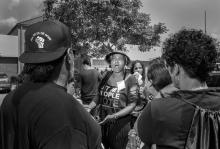
LAST FALL'S MIDTERM elections brought the country’s single biggest expansion of the right to vote since the 26th Amendment lowered the voting age to 18.
Florida voters passed Amendment 4, a change to the Florida Constitution that automatically restores voting rights to 1.4 million Americans who have been living and working in our communities but politically disenfranchised because of criminal convictions in their past.
Before this amendment, Florida’s policy was extra strict—one of permanent disenfranchisement for all felonies, meaning that it did not matter what you did, how long ago it was, or how old you were when you did it. If you had a felony conviction, you could not get your right to vote back unless the government decided to specifically grant you clemency. That meant that even people who had long ago completed probation and parole were still unable to vote.
This outcome in Florida is to be celebrated, for several reasons. Amendment 4 promotes full citizenship and permits more people to participate in the electoral proc-ess. It ends a blatant Jim Crow policy. It encourages successful reintegration into the community. But it also brings core Christian teachings into the public square—and it is important that we discuss these teachings because there is still work to be done.
Disenfranchisement of those convicted of felonies is still widespread, if not the norm. The clearest exceptions are Maine and Vermont, where persons never lose their voting rights, even while they are incarcerated. In two states—Iowa and Kentucky—any felony conviction results in permanent disenfranchisement unless the government specifically restores an individual’s rights, similar to the approach Florida just changed. Some states permanently disenfranchise certain citizens, depending on the felony conviction. A number of states—18, in fact—disenfranchise returning citizens until all terms of their sentences have been completed, which can end up being years after they have returned to the community.
What are we getting out of disenfranchising people the criminal justice system has determined are appropriate to be living and working alongside us? What does scripture advise?

I GREW UP IN LONDON, Ontario, a small city west of Toronto. As an immigrant, my dad wanted to make sure that his daughters grew up with an accurate understanding of Western culture, so he acculturated us to this strangely foreign world by taking us to non-Korean church services throughout the week. After our regular Korean Presbyterian Church’s Sunday service, he took us to a Sunday night Baptist service, a Wednesday night Baptist service, and a Friday night Missionary Alliance Bible study and youth group. Church also served as a free source of English lessons for me and my sister.
My parents loved to go into Toronto and Detroit to attend revival services. These revivals were out-of-this-world experiences, and at times they frightened me. I saw things that I had never seen in any other church visits, and it was during these services that I first witnessed the effects of the Holy Spirit.
My early experiences of the revivals involved adults gathered in the sanctuary for hours, and the only hint as to what they were doing was the eerie muffled sounds of their yelling, laughing, shouting, screaming, and crying. One day, as I tell in my 2018 book The Homebrewed Christianity Guide to the Holy Spirit, my curiosity got the better of me. I naively peeked inside the room. What I saw was a jarring scene of the adults in frenzied states of devotion. Some threw their arms up, with tears streaming down their faces, praying and crying out to God. Some people lay on the floor weeping and shaking uncontrollably. I saw my mother, illuminated in the yellow sanctuary light—she stood upright with her hands high above her head, eyes closed and tears rolling down her face as she spoke in tongues.
This was my earliest encounter with the fruits of the Holy Spirit. Due to the inconsistencies of what I saw and my fear, I didn’t do much to explore the Spirit for much of my life, until I started teaching theology and encountering people of various backgrounds, ethnicities, and religions. As I listened to them, I reflected on my own background—my Asian culture, religion, and heritage. I believe that knowing one’s own culture and heritage is imperative to understand the religious landscape in a globalizing world where cultures clash, immigrants come together, and refugees seek new homes away from home.
Asians comprise 60 percent of the world’s population. Major world religions such as Hinduism, Confucianism, Taoism, Buddhism, Jainism, Christianity, and Sikhism were born in Asia. But Christianity soon became Eurocentric, influenced by Greco-Roman philosophy. Today, as Christians grapple with faith in a globalizing world, it may be helpful to see if Asian culture can bring some insights into the Western Eurocentric portrayal of the Holy Spirit.
People who speak multiple languages can attest to how different languages give deeper insight to our concepts and experiences. The five Asian words and concepts that follow can help us enrich and reimagine the Western understanding of the Holy Spirit.

EVERY WEDNESDAY night, Sam’s youth group met in a darkened gymnasium dressed up as a rock concert: decorative fabrics, professional sound equipment, and a light show. A thin, attractive youth pastor with a soul patch and skinny jeans would deliver a message about the evils of sex, drugs, and alcohol.
In Matthew’s gospel, Jesus says, “You have heard that it was said, ‘You shall not commit adultery.’ But I say to you that everyone who looks at a woman with lust has already committed adultery with her in his heart.” This was a favorite verse of Sam’s youth pastors, who wielded it to warn kids against even thinking about sex. If lusting after a woman was just as bad as committing adultery, their logic held, then even thinking about sex is a sin.
“The weird thing,” Sam told me, “was that it wasn’t date rape or sexual harassment or even treating people disrespectfully that they were worried about. It was ‘impure thoughts’ and lust.”
There are two problems that I see here: One, these were teenagers, whose bodies are designed by God to become sexual, and two, the Greek word for lust, epithymia, is about general desire, not thinking sexual thoughts. If epithymia was a term for sexual desire, it would make some other things Jesus said super weird. (For example, Luke 22:15: “And he said to them, I have had sexual thoughts about eating this Passover with you before I suffer.”)
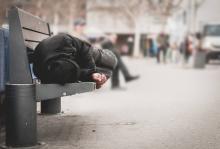
IT IS CRUEL TO PUNISH people for their poverty, but at every level of government, poor people are targeted for unfair treatment under the law. There is perhaps no clearer example of this than the growing criminalization of homelessness in the United States.
The criminalization of homelessness refers to a broad set of policies that punish people for having no indoor homes, such as local laws that prohibit sleeping, sitting, or lying down in outdoor public space. Since 2006, the National Law Center on Homelessness and Poverty (the Law Center) has tracked the explosive growth of these laws, including a 143 percent increase in those that outlaw living in vehicles. This is often the last refuge for poor families, the elderly, and disabled people who have been priced out of the rental market. Today, for example, half of the U.S. cities surveyed restrict sleeping and sheltering oneself outdoors, even when there are no alternative places to go.
Rather than address the root causes of homelessness, such as low wages that have not kept pace with rapidly rising rents, these policies merely punish people for living outside. Meanwhile, people who are sleeping in tents, lying down on sidewalks, and living in their vehicles are doing so because they are too poor to afford other housing. To jail, ticket, or threaten them for it only makes the problem worse.
People brought to jail for living in public often cannot afford cash bail, so they frequently accept criminal convictions to temporarily regain their freedom. They are then released back to the same streets, with the same lack of options, but with new fees and criminal records that make it even more difficult to get into housing and out of public space. This cycle is expensive and wastes community resources that would be better invested in permanent housing and other proven cost-effective solutions to homelessness.
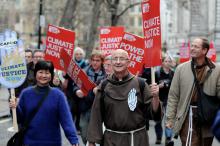
IT'S EASY to get discouraged. The Paris climate accord is the most significant multinational agreement yet to address climate change. Every country in the world, and Palestine, signed it. “That’s a lot of countries!” said former President Obama.
But on June 1, 2017, President Trump announced that the United States would withdraw from the Paris Agreement. By abdicating U.S. presidential leadership, Trump left it to the rest of the world’s governments to address the greatest crisis humanity has ever seen.
The depressing actions of the current administration are legion. Using federal agencies and executive orders, Trump is dismantling the climate progress so many have worked for. In September, federal agencies deregulated the release of methane gas, which traps about 25 times more heat in the atmosphere than carbon dioxide does. The Trump administration has allowed land set aside as national monuments to be pillaged for oil and gas drilling and mineral extraction. A fossil fuel corporate lawyer now working for the Environmental Protection Agency has dismantled our clean air regulations. The EPA has established incentives to encourage more than 300 coal plants to continue polluting our air and land.
If human-induced atmospheric warming continues at the current rate, the world will cross the 1.5-degree Celsius threshold of global temperature increase around 2040, much earlier than previously estimated, according to an October 2018 report from the International Panel on Climate Change, the first update since the Paris Agreement. Without aggressive action, food shortages and wildfires will worsen, water shortages will hit urban areas, killer heatwaves and violent storms will be more frequent, coastal areas will experience sea level rise, and populations will migrate. Humanity must become laser focused on achieving net zero emissions if creation as we know it is to survive. In other words, it’s now or never on climate change.

AT THE BORDER between San Diego and Tijuana, Mexico, people come together once a week for communion across the dividing line. El Faro: The Border Church/ La Iglesia Fronteriza is held every Sunday on both sides of the border. For some families, it is their only opportunity to see loved ones who have been separated from them by immigration status.
The service is at Friendship Park, or “El Parque de la Amistad,” the piece of land that lies between the mesh border fence and the larger border wall that keeps the United States separate from Mexico. Usually, the outer wall is closed, cordoning off any opportunities for people on opposite sides of the border to connect. But for four hours each weekend it opens. For most people, the border is a place of division. But for Pastor John Fanestil, the borderland, or “la fronteriza,” is “a place of encounter.”
Fanestil, who preaches at First United Methodist Church of San Diego, has been running El Faro: The Border Church for almost a decade. He meets me at the trailhead of Border Field State Park, the 1,000-plus-acre San Diego nature preserve that borders the sprawling metropolis of Tijuana. In the summer months, you can drive all the way down to the border, but the trail floods when it rains and is often closed to vehicles in the winter. Today, it’s shut because of a sewage spill from Tijuana, so we hike down.
Fanestil was raised in La Jolla, an upscale neighborhood in San Diego, but says that his first real introduction to Spanish culture was in Costa Rica, where he did a year of seminary. His first appointment after ordination was in the inland border town of Calexico, Calif., which is adjacent to its Mexican sister city, Mexicali. He fell in love with the border culture, and after serving congregations in Los Angeles and Orange Country, he was placed in San Diego in 2004.

FOR HER FIRST FEW WEEKS as pastor of Los Angeles First United Methodist Church, Mandy McDow forgot to collect the Sunday morning offering. It wasn’t because she was holding worship under a tent in a parking lot across from LA’s 20,000-seat arena. It wasn’t because a group of NBA All-Stars drove by and distracted her. The offering just didn’t cross her mind.
“After my first service, people said, ‘Where do we put our money?’ I was like, ‘Oh, I’m so sorry.’ We didn’t even bring out an offering box or anything. We had to go find it.”
Los Angeles First United Methodist Church—known simply as “First Church”—owns the parking lot at the corner of Flower Street and Olympic Boulevard in LA’s South Park neighborhood. On Sundays, the parking lot collects the members of one of LA’s oldest Protestant churches, a crowd that includes people experiencing homelessness, Filipino immigrants, and LGBTQ folks. On Monday, the 100-spot parking lot goes to work holding cars for people rushing to meetings at the convention center by day and concerts and sporting events by night. “We have this amazing gift of a perpetually regenerating source of revenue that we never have to ask anyone—none of our congregants—for another dime as long as we live,” says McDow.
First Church operates on what McDow calls an “inverted business model”; instead of asking the congregation to support the church, McDow runs a business—the parking lot—to support the congregation. “Churches sit empty 80 to 90 percent of the time, and they drain your resources, and then you’re asking for money from people who desperately need their money for other things,” says McDow. “Every church I have ever served had property issues. All the money goes back into the facility, and you can’t do ministry because you’re too busy maintaining the temple.”
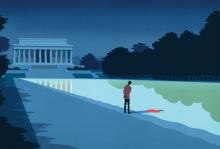
Reynolds arrived at an early morning protest in St. Paul, Minn., a few hours after Philando’s death. I heard her tell her story to a small crowd gathered on the street. Weeping, she shared how impossibly stuck they felt in the 74 seconds between stopping their car for the police and Castile being shot multiple times.
Castile was never given a chance to show identification because he was shot as he reached for his wallet. He tried to tell the officer about his legally licensed handgun, but the screaming officer didn’t seem to hear.
As Castile, Reynolds, and her young child ran errands on that summer night, civil rights laws did not protect their “life, liberty, and pursuit of happiness.” The Civil Rights Act of 1964 allowed for Castile’s employment at an elementary school and made legal their right to move through town. But these rights were not enough to protect Castile’s freedom to live.
What is democracy?
As U.S. Christians and others fight to defend the space for justice created by civil rights movements of the past, another theme rises: What does freedom mean in America today? What does Reynold’s rage require of people of faith?
At a minimum, it requires moving beyond a Sunday school version of democracy, as Southern Freedom Movement leader and historian Vincent Harding put it in 2002. “A solution of the present crisis will not take place unless ... [we] work for it. Human progress is neither automatic nor inevitable ... Every step toward the goal of justice requires sacrifice, suffering, and struggle. ... This is no time for apathy or complacency. This is a time for vigorous and positive action,” Harding said, quoting Martin Luther King’s Stride Toward Freedom.

Ash-Lee Woodard Henderson is co-executive director of the Highlander Research and Education Center in Tennessee, an organization founded in the 1930s as a “folk school” to train labor organizers throughout Appalachia and the South. In the 1950s, Highlander was an incubator for the civil rights movement, with trainings led by Septima Clark and Ella Baker. By the 1990s, the center supported anti-strip-mining battles in Appalachia and linked mountain organizers with anti-globalization efforts around the world. Today, Highlander draws on the strengths of immigrants, students, and other local leaders in the rural South to build popular education programs that advance cultural organizing for justice. Former Sojourners editorial assistant Faith Zamblé interviewed Henderson in July.
Faith Zamblé: How would you describe your work at the Highlander Center?
Ash-Lee Woodard Henderson: I describe it as a grand inheritance. I was 31 or 32 when I became the first black woman to be co-executive director of the Highlander Center. And I inherited 86 years of people’s stories and experiences and movement legacy. But with that legacy comes a great responsibility to make sure that the Highlander Center isn’t just a living museum, where people come to study what was; it should also be a place where people can learn how to do things now. It’s living in the past, present, and future at the same time, every day, all day.

WHEN JONATHAN MCGUIRE leaves his driveway, he has a choice. Turn right, and the pastor of Rockaway Beach, Mo.’s Bridge of Faith Community Church will hit the state highway with a clean shot into the thriving tourist mecca of Branson. Turn left, and he’ll find himself in downtown Rockaway Beach, a community left behind in Branson’s tailwinds.
Early on, McGuire’s neighbors gave him some sardonic, not-quite-tongue-in-cheek advice. They told him: “Never turn left.” Turning left, says McGuire, means “you have to acknowledge that there’s a problem.”
And yet, despite the difficulties, McGuire and his congregation have turned left into the heart of the uncomfortable messiness of poverty, but also into the heart of their community.
They’re not alone. I went looking for congregations living a vision for biblical social justice along the unique contours of rural America. I spoke to leaders seeking a just and hopeful future for their communities and discovered stories of people who are building relationships, advocating for the common good, and agitating for culture change.
Mobilized by love of neighbor
The economic reality of rural America is diverse. Pockets of robust growth exist within driving distance of vibrant cities and gorgeous natural amenities. Yet many towns face profound challenges. They’re communities fractured by generational poverty, addiction, and—perhaps surprisingly in breadbasket regions—food insecurity.
In places like this, it’s often the rural church that takes on the role of change agent. Social justice runs deep in the scriptures, given voice by the Old Testament prophets, embodied in Jesus’ life, and lived out in the upside-down economics of the early church (see Micah 6:8; Luke 4:18; Acts 2:44-45). And yet, as Jordan Rasmussen with the Center for Rural Affairs (CFRA) in Lyons, Neb., explains, social justice “can be an off-putting term for rural residents.”

From ‘war on poverty’ to ‘war on drugs’

The Lord has appointed me to bring good news ... to bind up the broken-hearted, to proclaim liberty to the captives, and release to the prisoners. —Isaiah 61:1; Luke 4:18
APRIL'S BIRACIAL DAUGHTER Erin has a drug problem. Heartbroken, “April” has watched “Erin” negotiate the prison system for the past 17 years. Now age 44, Erin has been in and out of five prisons and four jails, totaling almost eight years—all on drug-related charges.
On any given day in the United States, at least 137,000 men and women are in prisons or jails for drug use or possession, with thousands more spending extended periods on probation and parole. Why have rates of drug use (excluding opioids) not changed significantly despite more than four decades of the so-called war on drugs? Why are so many punished by incarceration for an activity that does not directly harm others?
In fall 2016, I was looking for volunteer opportunities in retirement. Having worked with a prisoner-release program in Canada, I wanted to pursue criminal justice issues again. In Harrisonburg, Va., I discovered the Valley Justice Coalition, a local group concerned about reducing incarceration and recidivism in Harrisonburg and surrounding Rockingham County.
With 2.2 million inmates, “no other country in the world imprisons its citizens like we do,” says Craig Haney, a professor of psychology at the University of California. Currently, 670 per 100,000 persons are incarcerated in the U.S., compared with 60 to 200 persons per 100,000 in other Western countries. This prison boom has led to annual spending of $72.5 billion on corrections.
Brother Fink received his 87-year sentence in 1990, when he was 34. The former parole system had offered incentives so that a sentence could be reduced. With cooperative behavior and attending educational programs, prisoners could earn “good time credits,” so Brother Fink diligently complied. But by the mid-1980s, many states had passed “truth-in-sentencing” laws that required prisoners to serve higher percentages (typically 85 percent) of their already long sentences, followed in the ’90s by “tough on crime” policies.
Now state prisons in the U.S. face an exploding elderly population. Between 1993 and 2013, the number of prisoners 55 years or older, serving sentences of one year or longer, increased 400 percent, to 131,500. If this trend continues, by 2030 a third of all inmates will be elderly, escalating the need for geriatric facilities and staffing, with costs twice that of younger inmates. The Osborne Association, which works with older prisoners and their families, estimates current annual spending at $16 billion for inmates aged 50 and older, warning that without decisive action the criminal justice system is at risk of collapsing under its own weight.
After serving 28 years, might Brother Fink be eligible for parole? Sadly, the Virginia parole board denies most releases, currently approving only 6 percent. Brother Fink has had 11 parole interviews, receiving three-year deferrals, including two geriatric turndowns.
As of October 2016, the backlog of prisoners eligible for parole in Virginia numbered 2,765, costing the state more than $77 million annually. Given this backlog and the seriousness of Brother Fink’s crimes, what are his chances for release at his next parole hearing? Then multiply Brother Fink by more than 100,000 elderly prisoners across the nation, who are some of the most rehabilitated and most infirm in the system, thus posing the least threat to public safety.
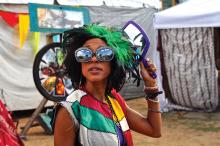
The wry 20th century theologian saw the “radical and wondrous splendor” of the big top as an image of the kingdom of God: miraculous, death-defying stunts; an impending sense of both calamity and delight; parodied pantomimes of social convention—all enacted by a company of the “freaks” snubbed by polite company. “The circus is eschatological parable and social parody,” wrote Stringfellow. “It signals a transcendence of the power of death, which exposes this world as it truly is while it pioneers the kingdom.”
Drawing inspiration from the biblical covenants between God, people, and land—as well as Stringfellow’s beloved circus and other resistance traditions, including Brazilian Carnivale parades, Burning Man, West African drumming, and the warnings of Indigenous elders—the members of Holy Fool Arts pitched their tents in Philadelphia this summer to stage the seventh Carnival de Resistance, “a traveling carnival, village, and school for social change bridging the worlds of art, activism, and faith.”
During the week, the troupe partnered with local groups to paint murals, work in gardens, teach Bible studies, and join creative acts of protest. On weekends, they staged ceremonial theater performances (with a bike-powered sound system), demonstrated fossil-fuel-free living in their eco-village, and hosted an interactive carnival midway, complete with sideshow attractions, art installations, crafts, and games.
“Carnival traditions are about simultaneously subverting the dominant order while temporarily inhabiting an alternative world of festive celebration, playful mockery, and embodied community,” director Tevyn East told Sojourners. “We at the Carnival de Resistance seek to honor these long-standing traditions and spark the prophetic imagination through acts of resistance and incarnation.”

A Deeply Moral Act
Voting is a decisive statement of Christian faith that I matter, justice matters, and others matter.
by Richard Rohr
Low voter turnout is generally a sign of a demoralized society, and people of power feed on that demoralization, knowing that they can then easily gerrymander, suppress and limit voting rights, and give elections to the rule of money and lobbyists—and there will be little outcry, because there is so little trust or even interest in the whole system anyway.
Yet this is largely where the U.S. is today.
The powers that control society are quite happy that it is always minorities of all stripes that first feel this powerlessness and this demoralization. Since the early days of representative government, it has been believed that democracy would only work if there was a truly free and informed citizenry. We presently seem to lack both in the U.S. This is why voting is a deeply moral act for me—in rebuilding confidence and encouraging an intelligent and hope-filled society. It is also a decisive act of Christian faith that I matter, society matters, justice matters, and others matter.
Not to vote is to hand our power and our dignity over to people who fear actual freedom, honest intelligence, and faith in the very goodness of humanity.
Voting for Change
I vote because many of my brothers and sisters can’t.
by Myrna Pérez
I vote for a lot of reasons. I love joining my fellow citizens in a community-minded act. I love having a say in picking the leaders who get to decide on things that matter to me. Increasingly, I love to vote and feel compelled to vote because I know there are about 4.5 million Americans living and working in communities across the country who cannot because they have a criminal conviction in their past.

MOST OF US KNOW that there is something drastically wrong with the American economy. In 2017, the richest 10 percent of the population owned 77 percent of the nation’s wealth and the 20 richest Americans had more wealth than the entire bottom half of the American population. What is worse is that the new tax bill passed by President Trump and the Republican Congress will increase this imbalance. By 2027, according to the Tax Policy Center, 90 percent of its benefits will go to the richest of Americans. Because the changes will be incremental, they are not likely to be noticed by the vast majority of citizens until it is too late.
Financing these tax breaks for the rich is being accomplished in three ways. First, there will be cuts in benefits for the middle class, which that will mean less money for higher education, medical programs, and social security. Second, there will be dramatic cuts made to the programs that have heretofore provided a safety net for the poor, including cuts to the food stamps program, Medicaid, and housing subsidies. Third, there will be a huge increase in the national debt.
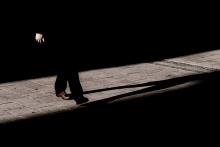
CHRISTIANITY IS THE ONLY religion in North Korea that is considered to be strictly a foreign religion. North Korea considers Christianity to be the forefront of American imperialism. The country is taught that Christian missionaries in the 19th century came to Korea to indoctrinate the people with Western civilization. Then, in the Korean War, the U.S. soldiers who massacred their people were depicted as Christian crusaders. To fan these flames, the largest group of Koreans who opposed communism when the government was established in 1945 was the Christians. Therefore, in North Korea, Christians are likened to spies, foreign imperialists, and anti-government traitors.
Despite this, Christianity has been allowed to persist in North Korea. The vast majority of churches were destroyed during the early years of communism in North Korea, but in 1989 Kim Il Sung brought life back to Christianity by rebuilding the home church of his mother. Since then, two other state churches have been erected: one additional Protestant church and one Catholic church.